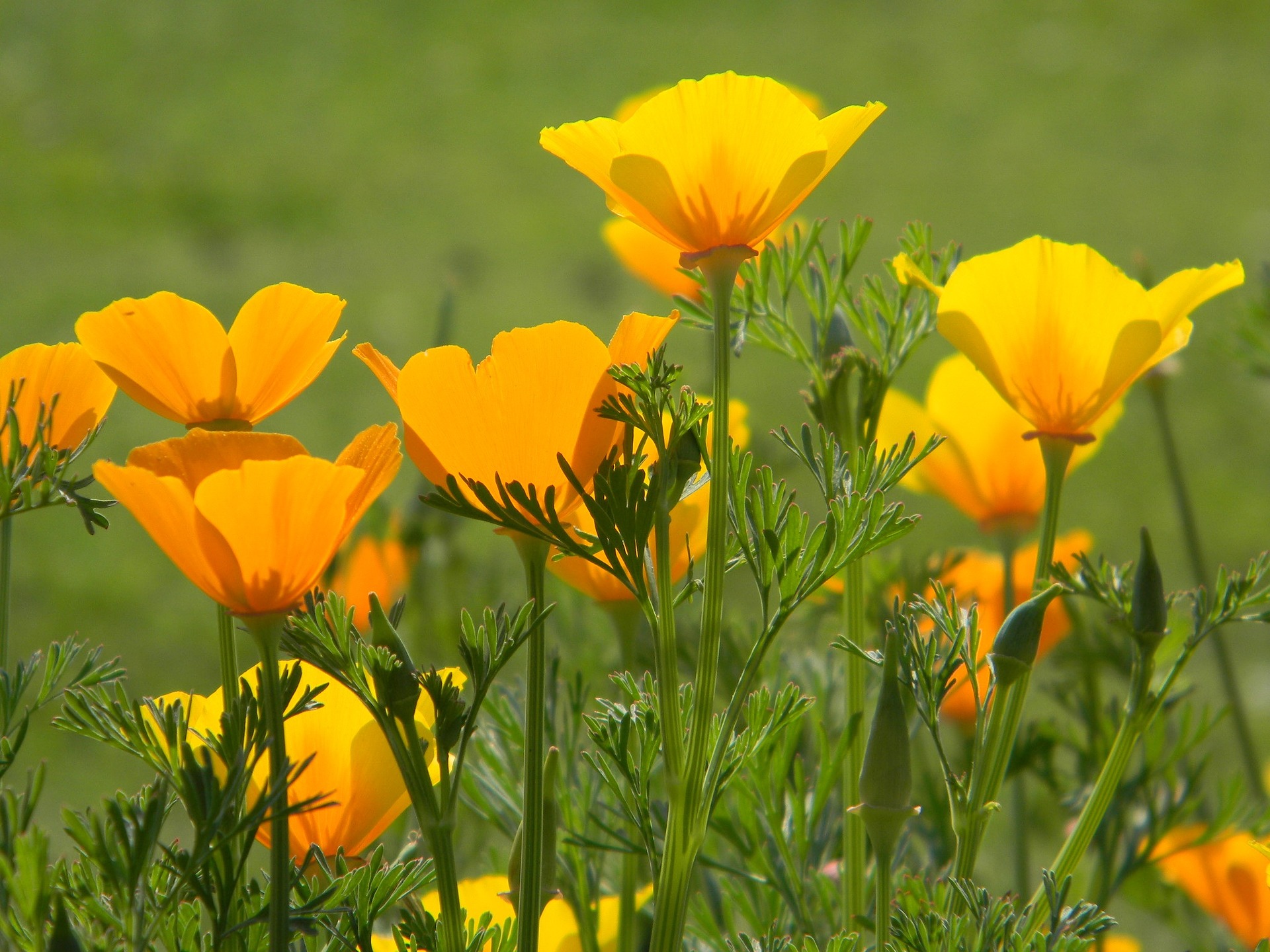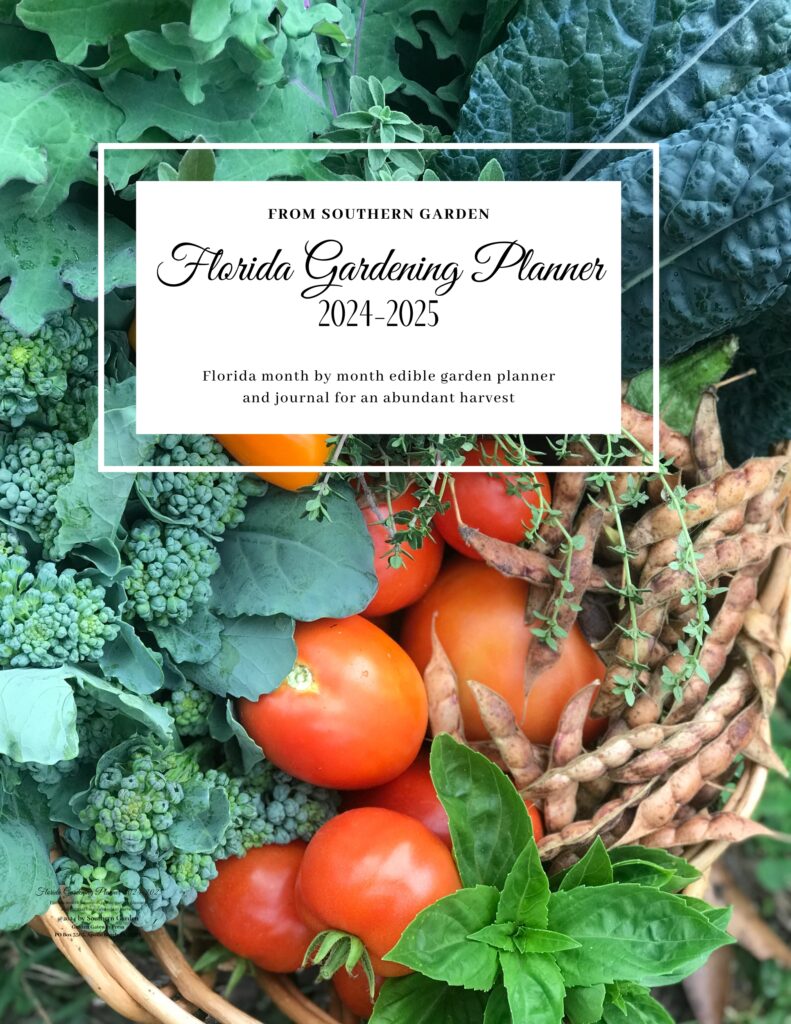The California Poppy, known scientifically as Eschscholzia californica, is a vibrant and resilient wildflower that brings a splash of color to any garden. With its distinctive orange blossoms, growing California poppy from seed is one way to make the most of poor soil with little irrigation.
The plant typically reaches a mature height of 12 to 18 inches with a spread of about 6 to 12 inches, forming a low-growing, bushy mound of fine, feathery foliage.
Native to the United States and Mexico, California Poppies thrive in a range of environments, making them a popular choice for gardeners across various regions. They are best suited to USDA Hardiness Zones 6 through 10, where they can be grown as perennials or annuals depending on the local climate.
Known for their drought tolerance and love of the sun, these poppies are a fantastic choice for low-water gardens and sunny, open areas.
When to Start Growing California Poppy from Seed
Timing is essential when sowing California Poppy seeds directly in the garden. Here’s a guide based on your USDA Hardiness Zone:

In Zones 3-5
Direct sow California Poppy seeds in early spring, as soon as the soil can be worked. In these cooler zones, the seeds will germinate as the soil warms up.
In Zones 6-8
The best time to sow seeds is in late fall or early spring. Fall sowing allows the seeds to stratify naturally over the winter, leading to spring germination.
In Zones 9-12
In these warmer areas, sowing in the fall is ideal. The mild winter temperatures provide a conducive environment for seed germination, and the plants can establish themselves before the summer heat.
For all zones, California Poppies prefer a sunny spot with well-drained soil. They are adaptable to a range of soil types but thrive in sandy or loamy soils.
Soaking California Poppy Seeds Before Sowing
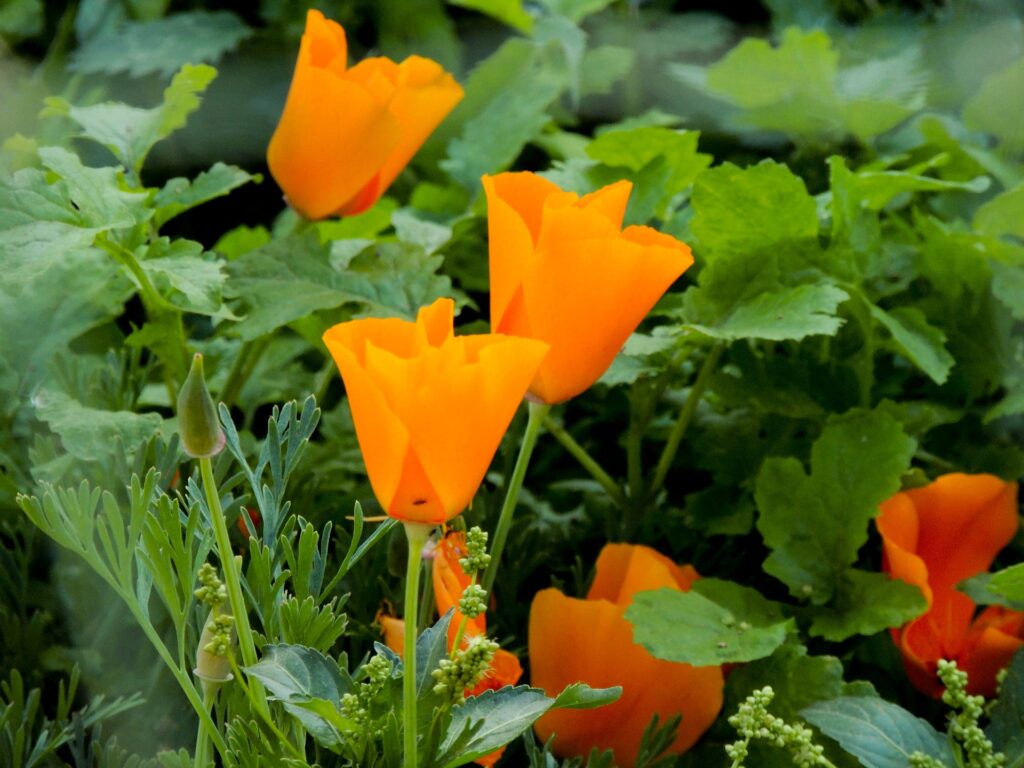
Soaking California Poppy seeds before sowing can enhance germination. Here’s how to do it:
- Fill a small bowl with room-temperature water. The water should be lukewarm but not hot.
- Place the California Poppy seeds in the water. Let them soak for about 12 to 24 hours. This soaking process softens the seed coat, making it easier for the embryo inside to break through and sprout.
- After soaking, drain the water and prepare to sow the seeds immediately. Prolonged soaking beyond 24 hours may negatively affect the seeds, so it’s important to sow them promptly after the soaking period.
- Sow the seeds directly in your prepared garden bed or outdoor container, following the recommended depth and spacing.
This simple step of soaking can expedite germination and lead to a more uniform sprout of your California Poppies.
Prepare Your Garden for Growing California Poppy from Seed
For the successful cultivation of California Poppy, preparing the garden bed appropriately is crucial. Here’s how you can ensure the best growing conditions:
Choosing a Location
California Poppies thrive in full sun. Choose a location that receives at least 6-8 hours of direct sunlight daily. The more sun these plants receive, the more they will bloom.
These poppies prefer well-drained soil. They are drought-tolerant and can thrive in dry conditions, so areas that do not retain excessive moisture are ideal.
California Poppies are not fussy about soil and can grow in poor, infertile soils. However, they do best in loose, well-draining soil. They prefer a neutral to slightly alkaline soil pH, but they are generally adaptable.
Preparing the Garden Bed
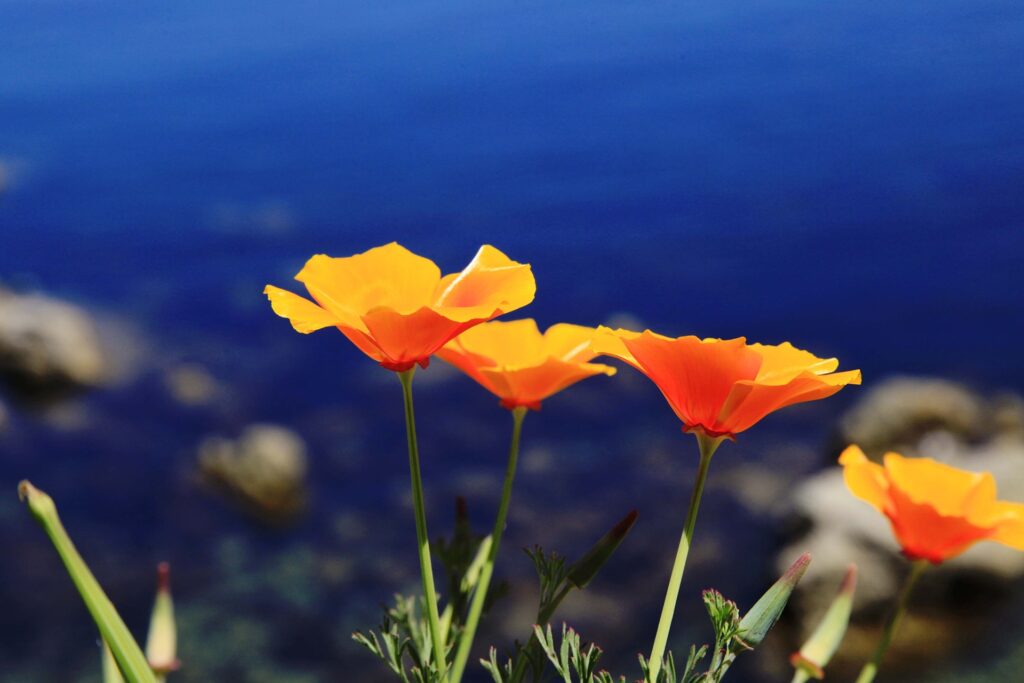
Begin by clearing the chosen area of weeds, grass, and other debris. This ensures the poppies won’t have to compete for nutrients and space.
Loosen the soil with a rake or hoe. California Poppies don’t require deeply tilled soil; just breaking up the surface is sufficient for improved aeration and drainage.
If your soil is particularly compact or poor, consider amending it with some organic matter, such as compost. This step, however, is not essential as California Poppies can thrive in less fertile conditions.
Smooth the soil with a rake to create an even surface. This makes sowing seeds easier and ensures even seed distribution.
Before sowing, lightly water the soil to provide a moist, welcoming environment for the seeds.
Direct Sowing California Poppy

Direct sowing California Poppy seeds is a straightforward process. Follow these steps to ensure a successful sowing:
Depth to Plant
Sow California Poppy seeds just below the surface of the soil, about 1/8 inch deep. This shallow depth allows the seeds to receive sufficient light, which is crucial for germination.
Spacing
Scatter the seeds lightly over the prepared area. California Poppies do well with a bit of space to grow, but they can also thrive in slightly crowded conditions. If you’re aiming for a more controlled design, space the seeds approximately 6 to 8 inches apart.
Watering In After Planting
After sowing, gently water the area. Use a fine mist to avoid disturbing the seeds. Keep the soil moist but not waterlogged until germination occurs. Once the seedlings are established, California Poppies can tolerate drier conditions.
Thinning
Once the seedlings are a few inches tall, thin them to about 6 to 8 inches apart. This spacing allows each plant enough room to develop fully and ensures good air circulation, which is vital for plant health.
How to Harvest California Poppy Seeds
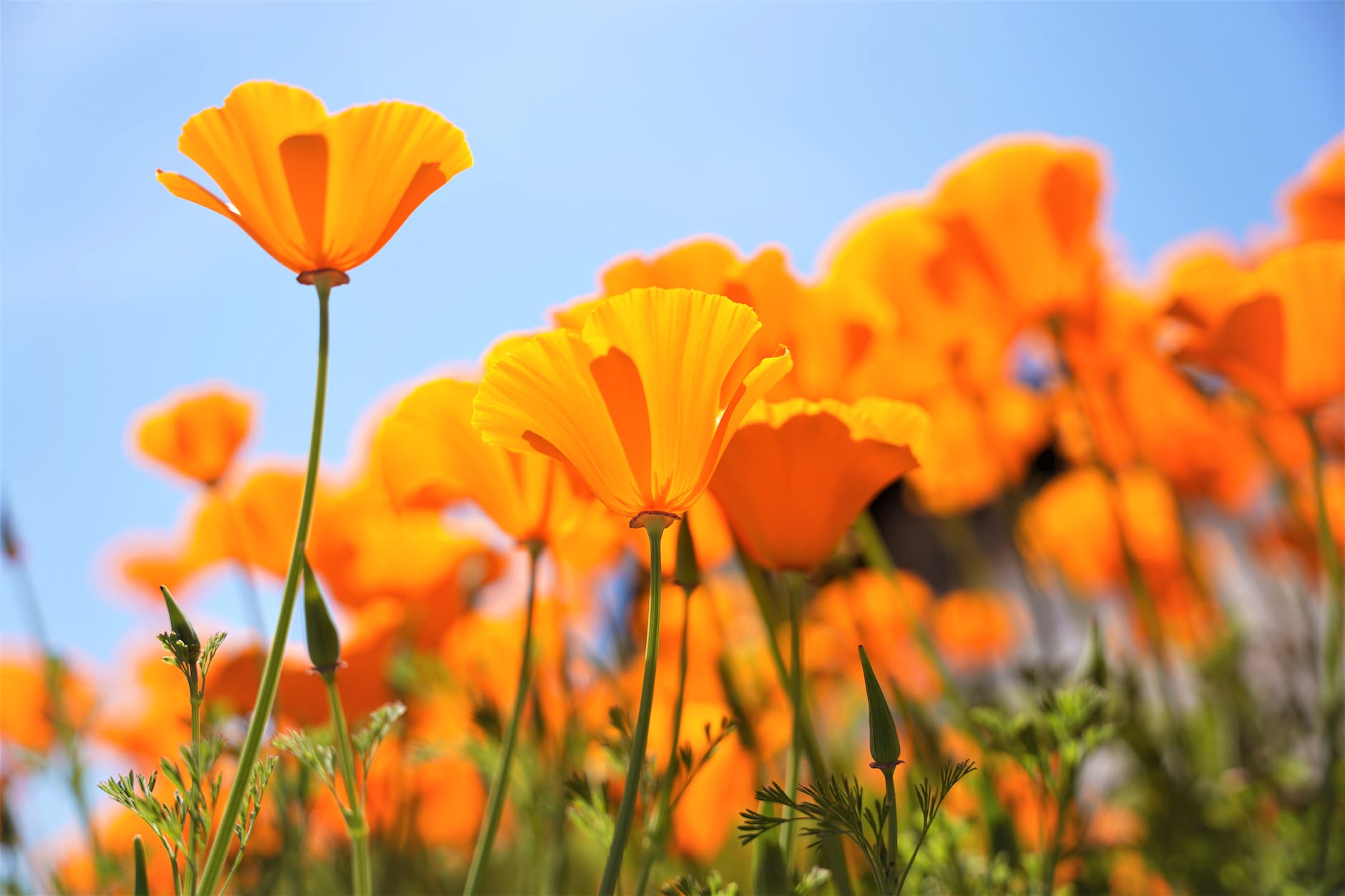
Harvesting seeds from your plants allows you to keep growing California Poppy from seed and share this beautiful wildflower. Here are step-by-step directions:
Wait for Seed Pods to Mature
After the flowering season, the poppies will develop seed pods. Wait for these pods to dry and turn brown on the plant. This usually occurs in late summer or early fall.
Harvest the Pods
Carefully clip the dry seed pods from the plant using scissors or pruning shears. Be gentle to avoid spilling the seeds.
Dry the Pods
Place the harvested seed pods in a warm, dry area for a few days to ensure they are completely dry.
Extract the Seeds
Gently open the dried pods over a container or paper. The seeds will be small and dark. Shake or tap the pods as needed to release all the seeds.
Store the Seeds
Place the seeds in a paper envelope or airtight container. Store them in a cool, dry place until you are ready to sow them the following season.
What to Expect from California Poppy Over Winter
California Poppy, as a hardy annual or perennial (depending on the climate), has a distinct growth pattern over winter:
In milder climates (Zones 9-11), they may remain green or dormant but alive throughout the winter.
In colder regions (Zones 3-8), California Poppies will die back after the first heavy frost. They often self-seed, leading to new plants sprouting the following spring.
In very cold zones, consider sowing seeds in late fall so they can naturally stratify in the soil and germinate in spring.
Start Growing California Poppy from Seed
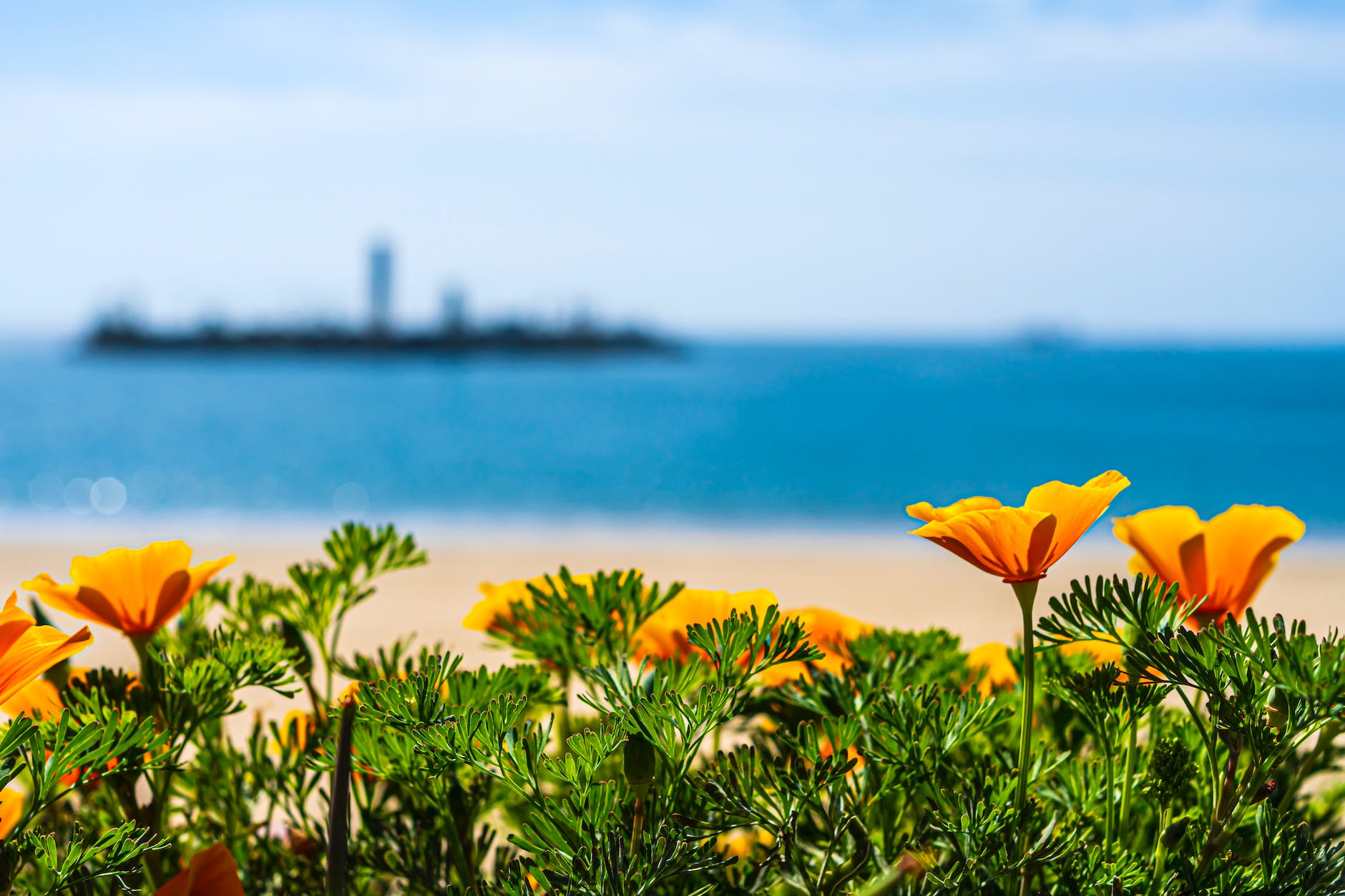
Growing California Poppy from seed is a rewarding experience that enhances any garden with vibrant color and natural beauty. By following the guidelines for sowing, caring, and harvesting, you can enjoy the bright blossoms of this wildflower each year.
Growing California Poppy from seed offers a low-maintenance and delightful addition to your gardening endeavors.
